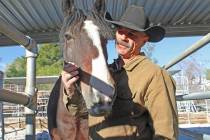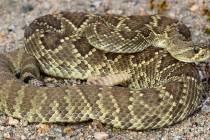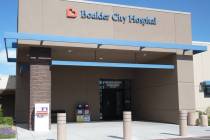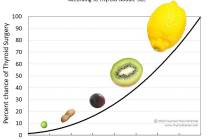Venomous creatures like hot weather, too
The spring and summer months are upon us. This, for many people around town, means they will be starting to go outside and enjoying the great weather. Unfortunately, with the hotter temperatures and the weather steadily becoming warmer, the bugs, snakes and other insects become more active. I’m sure, if you haven’t already, you will begin to see the bugs and insects more frequently.
An increase in bug activity also means an increase in small rodents as well as snakes. Living in Southern Nevada we have to be very mindful of potentially venomous snakes and spiders, as well as scorpions. The desert is home to some amazing and deadly venomous snakes and spiders and, with some added caution around the house and out in the desert, we can keep a happy distance between us and them.
Southern Nevada is home to a few different poisonous snakes, all of which are very similar to each other, equally aggressive and possess deadly venom. Rattlesnakes are the most common of these poisonous creatures. Southern Nevada, more specifically Clark County and the surrounding Mojave Valley, is home to many species of rattlesnakes.
The most concerning for paramedics and doctors throughout the valley are the Mojave Desert Sidewinder, the Mojave Rattlesnake, the Southwestern Speckled Rattlesnake and the Western Diamondback. All of these snakes are considered venomous snakes and, if left untreated, bites could be potentially fatal.
A rattlesnake will attempt to warn intruders they are nearing the snake by shaking the “rattle” at the end of its tail.
As the weather warms up these animals are out looking for sunlight and food for survival. Take extra caution on hiking trails and around your homes, including near small bushes and trees and underneath your home.
It is important to treat every snake bite as though the snake is venomous. Typical signs and symptoms of a venomous snake bite are pain and swelling to affected area of the bite. You may notice an increase in pulse rate and respiratory rate. The most important thing you can do is remain calm and activate the emergency medical services system immediately.
Some nausea and vomiting as well as weakness and seizures are late signs; these patients need to seek immediate medical attention.
It is best to avoid “cutting and sucking” the wound. Instead it is best to mark the bite site with a pen and apply light tourniquets above and below the bite marks. There are specific hospitals in the valley that carry the anti-venom to rattlesnake bites; transporting patients to the most appropriate hospital facility could mean the difference between life and death.
Similar to snake bites, insect bites such as those from a spider also can be potentially fatal. All spiders are venomous. However the majority of spiders lack long enough fangs to break the skin of human flesh and therefore are not classified as “harmful” to humans.
In Southern Nevada the two main spiders to be aware of are the Black Widow spider, classified by the red hourglass shape spot on its abdomen, and the Brown Recluse spider, classified by the dark brown or black fiddle-shaped spot on its back.
Very similar to venomous snake bites, these bites will be painful and cause redness and swelling to the affected area. The signs and symptoms of these bites are also very similar. The venom in these bites will cause an increase in heart and respiratory rates, dizziness, weakness, nausea and vomiting, and seizures.
Spiders are often found in small, dark places. Unlike rattlesnakes, spiders do not give a warning sign when you are encroaching on their territory; their bites are a defense mechanism to keep them protected.
Avoid “cutting and sucking” these wounds as well. Remove any constricting clothing and/or jewelry, and activate the emergency response system immediately. If waited to be treated, the venom can become toxic and necrotic to the surrounding muscle tissues.
If you have any other questions regarding snakes or spiders, or the treatment of such bites, feel free to contact me at the fire station at 702-293-9228 or through my email at bshea@bcnv.org.
Brian Shea is a Boulder City paramedic/firefighter.










